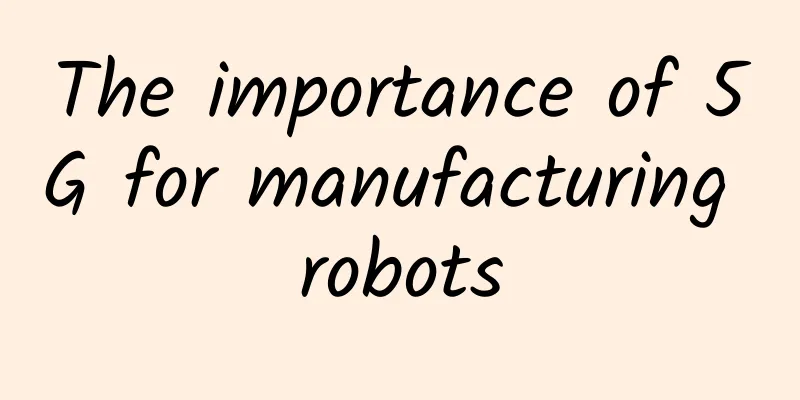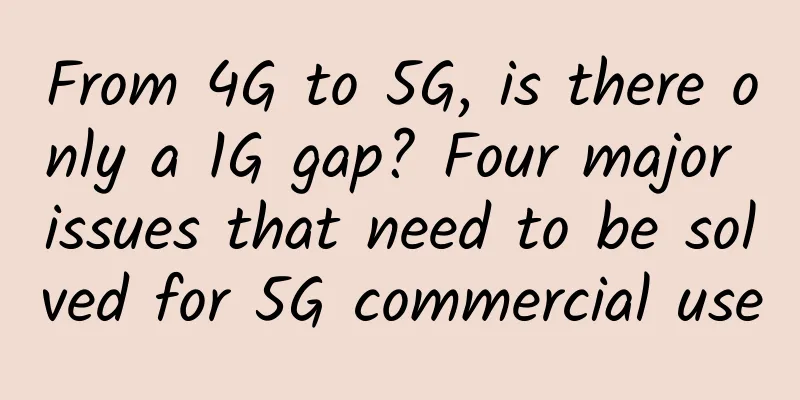Japan's largest operator stops NB-IoT services, a new round of industry "reshuffle" is coming, who will be next?

|
On March 30, NTT DoCoMo, Japan's largest telecommunications operator, announced on its official website that in view of the current business environment and in order to concentrate operating resources, the company decided to stop NB-IoT services on March 31, 2020. As a mainstream operator with a pivotal position in the global operator community, NTT DoCoMo's move will have a certain impact on the entire IoT industry. Matt Hatton, former vice president of Gartner Research, posted on his Twitter that "this is big news because it is a leading operator announcing the suspension of NB-IoT services in the world's third largest economy." What impact will NTT DoCoMo's discontinuation of NB-IoT services have on the NB-IoT industry? In my opinion, although other overseas operators may choose to withdraw from NB-IoT services in the future under the influence of NTT DoCoMo, the main development trend of NB-IoT will not be affected by these choices. Why do we say so? We can analyze it from the following three aspects 1. The head effect of cellular IoT is more obvious in NB-IoT, and the partial withdrawal will not affect the overall situation Global operators are the absolute main force in providing cellular IoT connection services. Operators also regard IoT as a core source of connections in addition to mobile communications, and it is also an important source of income. However, from a global perspective, cellular IoT shows a very obvious head effect, and most IoT connections are concentrated in a few operators. Although the value of connection pipelines is decreasing, for operators, they must first have large-scale connections before they can explore large-scale benefits. Data previously released by well-known market research firm Counterpoint shows that in the first half of 2018, the world's top 10 operators accounted for 83% of the global cellular IoT connections, the top five manufacturers accounted for 73% of the global cellular IoT connections, and the top three manufacturers accounted for 60% of the global cellular IoT connections. By 2025, this concentration will be further strengthened. Cellular IoT connection share of major operators (Source: Counterpoint, IoT Think Tank) The top ten manufacturers that occupy the vast majority of the global market share are all from China, the United States and Europe. The top three are China's three major operators. After more than a decade of development, with the help of the demographic dividend, the three major domestic operators are unmatched by other operators in terms of mobile users and fixed-line users, and there is no suspense that the number of IoT connections is in the top three; Vodafone, as the operator with the widest global business scope, has become the leading operator of the Internet of Things with its incomparable advantage of "one-point access, global service"; followed by several operators in the United States, and Telefonica and Deutsche Telekom, two European operators, are similar to Vodafone and have global markets. In general, Chinese and American operators mainly rely on their huge domestic markets to rank among the top ten, while European operators rely on international operations, covering Europe, Africa, South America, Southeast Asia and other places, and also occupy a place in the global IoT connection market. Among global telecom operators, the top ten account for 83% of cellular IoT connections, and the other hundreds account for only 17%. By 2025, the proportion of the other hundreds of operators will further drop to 13%, and the head effect is becoming more and more obvious. For operators, when the most basic guarantee of the number of connections cannot be achieved, how can they realize revenue? Therefore, it is certain that, except for a few head operators, most operators cannot obtain the dividends of the development of cellular IoT. As a component of the cellular Internet of Things, NB-IoT will inevitably form a head effect. Although there is no specific NB-IoT connection data for global mainstream operators, according to public data, as of January 2020, the number of global NB-IoT connections exceeded 100 million, and by February 2020, the number of Chinese NB-IoT connections exceeded 100 million. It is certain that most NB-IoT connections are concentrated in the Chinese market, and the head effect is more obvious. From this perspective, China's three major operators and a few mainstream operators overseas such as Vodafone and Deutsche Telekom may become the leading manufacturers with the highest concentration of NB-IoT connections in the world, while a large number of other operators have a limited share. In this context, it is understandable that some operators withdraw from NB-IoT, and their withdrawal cannot change the overall development trend of NB-IoT, because the core leading manufacturers are the driving force for industrial development. 2. Stop NB-IoT service, but do not stop IoT service According to the latest data from GSMA, as of January 2020, 64 operators around the world have launched 129 cellular IoT networks, including 93 NB-IoT networks. Source: GSMA According to the analysis in the previous section, most of the cellular IoT connections will be concentrated in a few leading operators, and among the 93 NB-IoT networks, there are obviously a large number of networks that can only carry very limited connections. In my opinion, it is not just NTT DoCoMo that will stop NB-IoT services in the future. Other overseas operators may also make the same decision. This decision is also made on the basis of market-oriented operation of each operator. As analyzed in the previous section, if an operator has very few NB-IoT connections, the cost-benefit of continued operation is not ideal, or the contribution to its overall development strategy is limited, then stopping NB-IoT services is also a normal and rational business decision. Of course, the leading operators with a large number of connections will continue to operate it as a major strategic business. As for NTT DoCoMo, the company began to provide NB-IoT connection services in Japan in April 2019, and stopped the service in less than a year. However, stopping NB-IoT services does not mean stopping IoT services. In its announcement, the company still provides users with LTE-M (eMTC) and Cat.1 services. We also see that in different regional markets, most operators will choose between NB-IoT and LTE-M based on their own advantages and regional characteristics. Only a small number of manufacturers will deploy both. After all, deploying two networks at the same time faces high costs, but in the end more operators choose to deploy NB-IoT. Each operator has its own way of doing business, and different network standard choices represent different ideas for the development of the Internet of Things. Some analysts also believe that NTT DoCoMo has only suspended NB-IoT. After 5G is commercialized on a large scale in the future, 5G mMTC scenarios will still need the support of low-power large-connection technology. NB-IoT, as a core technology candidate for 5G mMTC, may still be reactivated. 3. The NB-IoT industry structure is facing a reshuffle, and in-depth application is more meaningful than casting a wide net As mentioned in the previous section, some operators may still stop NB-IoT services in the future due to business conditions, but these are only the long tail of the NB-IoT industry structure. The head operators that occupy the vast majority of connection shares are still the core driving force for the development of the NB-IoT industry. The author believes that the NB-IoT industry structure is facing a new round of reshuffles, and it is not meaningful to pursue a "wide-net" state where most operators in the world deploy commercial NB-IoT. Because of the head effect of cellular Internet of Things, after all, the future industry structure may be that 5% of operators occupy more than 80% of the NB-IoT share, so in the future, we should pay more attention to the in-depth application actions of these head manufacturers. Among these leading manufacturers, Chinese operators undisputedly occupy the top three. The author mentioned in the previous article "Milestone: Domestic 5G NB-IoT Connections Exceed 100 Million, Big Connections Accelerate" that the number of connections of the three domestic operators exceeded 10 million, and two of them exceeded 40 million. Among them, the four industries of water meters, gas meters, fire smoke detectors, and electric bicycle anti-theft have achieved more than 10 million connections, while smart manhole covers, smart door locks, tracking and positioning, smart street lights, etc. have more than one million connections. Driven by these large-scale connections, NB-IoT technology and business models in many industries have been deeply verified. At the end of 2019, in the job report organized by the Ministry of Industry and Information Technology on the ideas of directors, Wen Ku, director of the Information and Communications Department, specifically emphasized "insisting on application traction and promoting the innovative development of NB-IoT", which shows the continued support of policies for NB-IoT. Among overseas operators, global operators such as Vodafone, Deutsche Telekom, and Telefonica will also become leading NB-IoT vendors. Currently, Vodafone has launched NB-IoT services in 16 countries, and Deutsche Telekom has launched NB-IoT services in 8 countries. Their smart door locks, smart parking, smart meters, water meters, and sharing economy applications have accumulated millions of connections. Of course, these vendors not only open networks and provide services in multiple countries, but also do a lot of work to simplify IoT connections. Take Vodafone as an example. In June 2018, Vodafone and Deutsche Telekom successfully implemented the world's first NB-IoT international roaming trial in Europe. In October 2019, Vodafone and US operator AT&T jointly announced that they would carry out roaming cooperation based on their respective NB-IoT networks. The scope of cooperation includes both AT&T's NB-IoT network throughout the United States and Vodafone's NB-IoT network covering Spain, Germany, Italy, the United Kingdom and the Netherlands. Vodafone also plans to expand NB-IoT cross-network roaming cooperation to 40 operators around the world, which means that users only need to sign a contract with Vodafone to use the NB-IoT networks of 40 operators around the world. These actions make NB-IoT access more convenient and provide users with more service content. NB-IoT has very obvious scale economy characteristics. It can bring value enhancement to users based on large-scale connections, which is meaningful to operators. Therefore, in the current NB-IoT industry structure reshuffle, the in-depth application of a few leading operators is more meaningful to the overall development of the NB-IoT industry, and is also the backbone of promoting industrial development. Even in an extreme case, for example, more than 80% of the operators that have commercialized NB-IoT have stopped providing services or shut down their networks, as long as the leading operators continue to vigorously promote NB-IoT as a key business, the global NB-IoT industry will still develop rapidly. If a network has only a pitiful number of NB-IoT connections for a long time, whether to withdraw from service will have no impact on the entire industry. With the development of NB-IoT, the reshuffle of the industry structure will inevitably take place, and the number of connections and service capabilities will gather towards a few leading manufacturers, and some long-tail operators will withdraw from this market. In summary, in the context of the global cellular Internet of Things head effect, although NTT DoCoMo is a mainstream operator, it does not have the position of a leading manufacturer in the NB-IoT industry. Its withdrawal from NB-IoT services has limited impact on the entire industry. After all, the actions of a few leading operators that occupy the vast majority of connections represent the development trend of NB-IoT. |
>>: Analysis of 5G network security issues
Recommend
IPv6 is finally going to replace IPv4, are you ready?
What to do on the weekend? The weather is so cold...
Discussion on 5G network construction plan
Labs Summary This paper proposes a 5G network arc...
New infrastructure is just starting, 5G is just beginning, and the key year for smartphones is 2021
"New infrastructure" is one of the core...
In the 5G era, will programmers lose their jobs or continue to be popular?
Recently everyone has been discussing such a thin...
Academician Wu Hequan: 5.5G does not require full network coverage, and recommends joint construction and sharing
IT Home reported on December 7 that the 2023 Worl...
2018 Huawei Global Financial Summit held in Beijing Future digital banking will be a fully connected platform
[51CTO.com original article] On April 25, Huawei ...
How should we respond to the 5G era? Talking about the prospects and career planning from the perspective of the Internet industry
The 5G war is in full swing, so what are the coun...
In the post-“number portability” era, where will users and operators go?
"Are you planning to transfer your number to...
10gbiz: 35% off on all VPS hosts, Hong Kong CN2 GIA/Los Angeles CN2 GIA line monthly payment starts from $2.4
10gbiz has launched a promotion this month, offer...
Five-minute technical talk | Understand how computers send and receive information in one article
Part 01 Physical Layer If a computer wants to tra...
Nielsen: 5G enters a period of accelerated development, new scenarios give rise to new consumer demands
Recently, Nielsen, a global monitoring and data a...
TmhHost New Year's Day promotion: Japan Softbank/Los Angeles CN2 GIA (normal/high defense) quarterly payment starting from 79 yuan
TmhHost launched a New Year's Day promotion, ...
I have seven solutions for implementing real-time web messaging
I have a friend~ I have built a small website, an...
When the "cold current" of the epidemic meets the "warm current" of 5G, can terminal manufacturers turn crisis into opportunity?
Amid the pandemic, terminal manufacturers have st...
Qianxinan Prefecture: Green "optical" network, a new style of government office
On a normal working day, sunlight shines through ...









